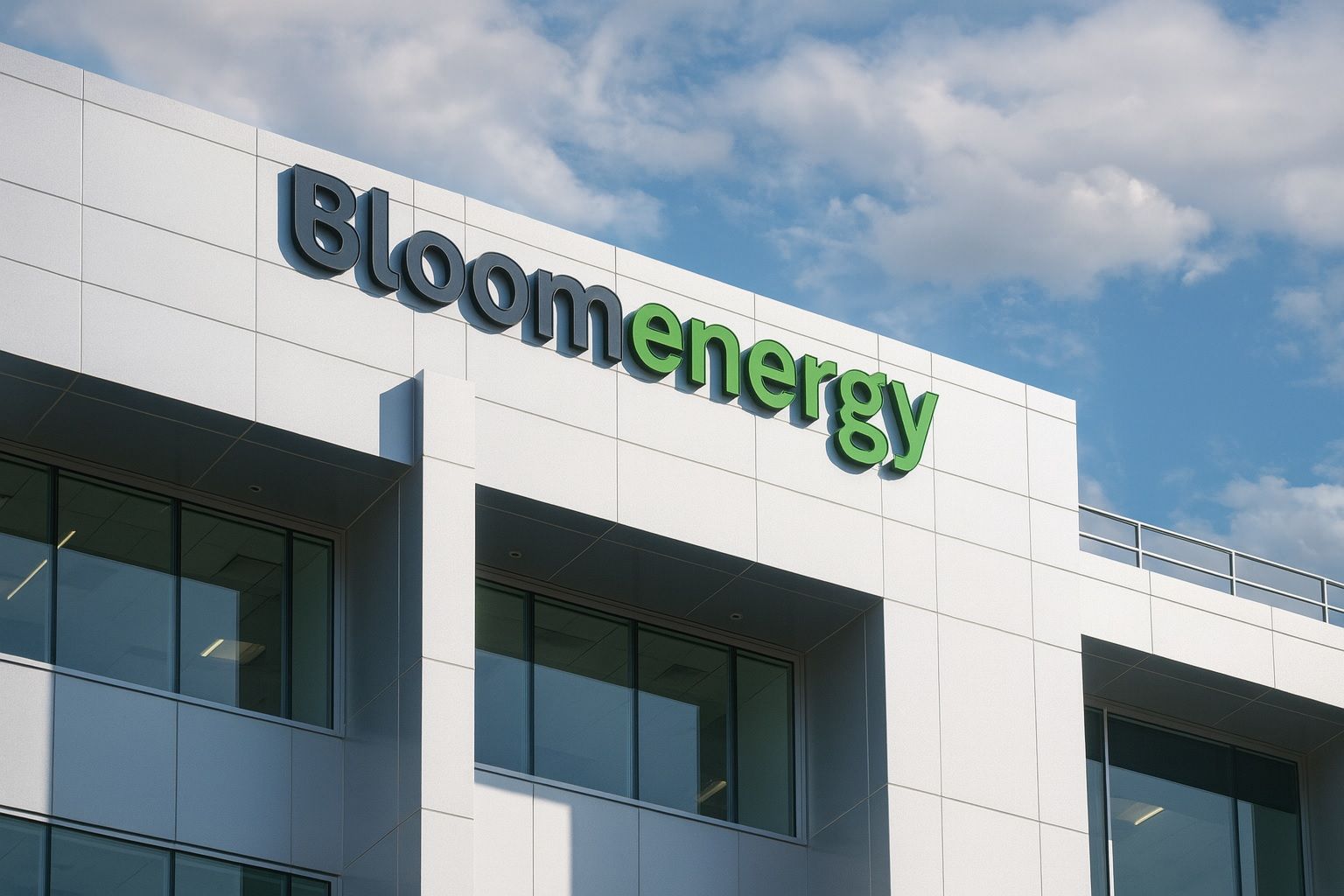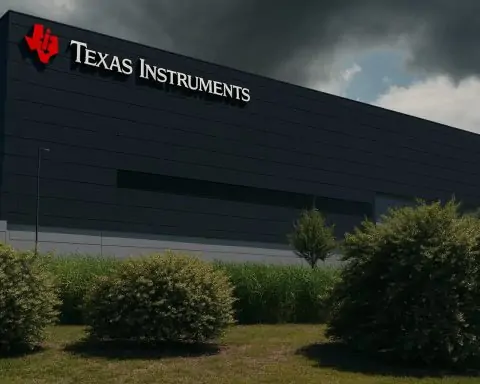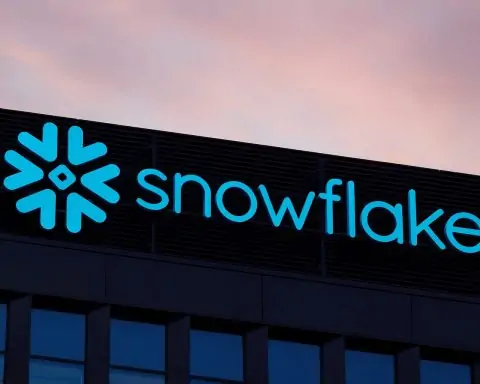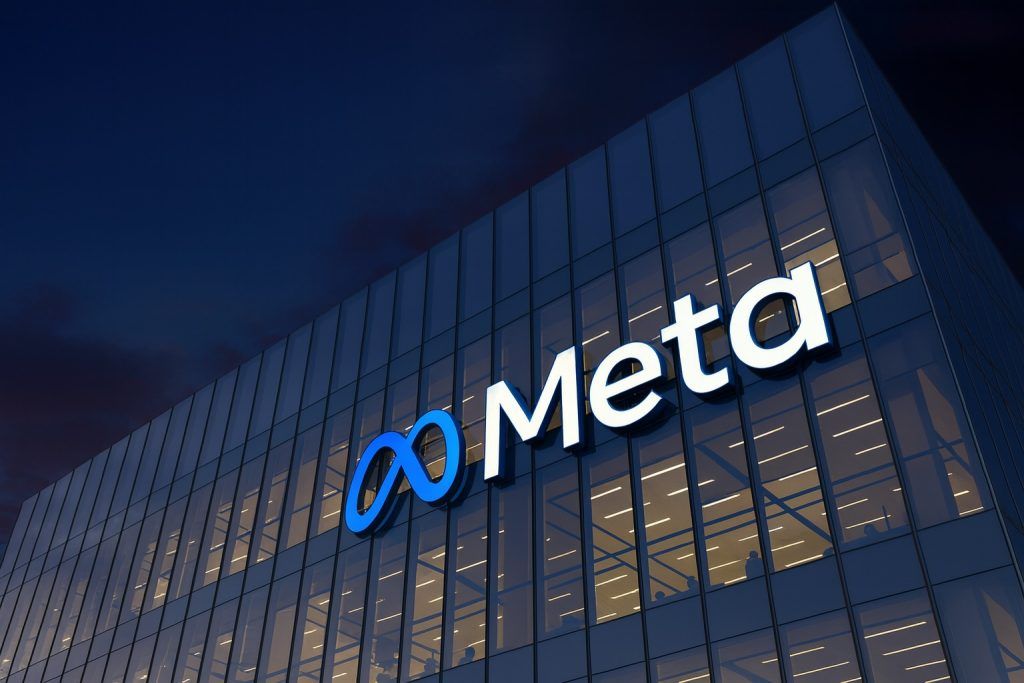- Blowout Q3 Earnings: Bloom Energy (NYSE: BE) crushed analyst expectations in Q3 2025, with revenue up 57.1% year-on-year to $519 million (vs. ~$428M expected) and adjusted EPS of $0.15 (consensus $0.10) [1]. Gross margin improved ~5.4 percentage points to 29.2%, and shares spiked ~18% in pre-market trading on the results [2]. CEO K.R. Sridhar touted “powerful tailwinds” from surging AI-driven electricity demand and vowed Bloom is “at the center of a once-in-a-generation opportunity” to redefine energy [3].
- Stock’s 2025 Surge: Bloom Energy has been one of 2025’s top-performing stocks. Year-to-date, BE shares have skyrocketed nearly 350–400%, and over 1,000% in the past 12 months [4] [5], elevating Bloom’s market value to roughly $20 billion. The stock hit all-time highs around $108–$113 this month [6] [7], and is up about 8–10% just this week. However, this meteoric rise has some experts cautious: Bloom now trades around 110× its projected 2026 earnings, a rich valuation even above mature AI leaders like NVIDIA [8], and 16% of its float is sold short [9], signaling bets against the stock and potential volatility ahead.
- $5B AI Partnership: A mid-October mega-deal with Brookfield Asset Management supercharged Bloom’s rally. On Oct. 13, Brookfield announced it will invest up to $5 billion to deploy Bloom’s fuel-cell systems at next-gen “AI factories” (data centers) [10] [11]. The news sent Bloom’s stock soaring ~25–30% in one day to record highs [12]. Brookfield’s first AI-infrastructure bet makes Bloom the preferred on-site power provider for Brookfield’s global data centers, leveraging Bloom’s solid-oxide fuel cells to deliver clean, reliable electricity on-site [13]. Executives said the deal “redefines data center power” – Brookfield’s Sikander Rashid noted fuel cells are “essential to closing the grid gap for AI” [14]. Bloom’s CEO called it a partnership to “reimagine the data center of the future”, as explosive AI computing demand strains the grid [15] [16].
- Business Momentum & Capacity Expansion: Bloom’s core product – modular Energy Server fuel cells – continues gaining traction. The company has already deployed 400+ MW of its fuel-cell capacity at data centers globally (serving clients like Oracle, Equinix, and American Electric Power) [17] [18]. To meet surging demand, Bloom is doubling manufacturing capacity to 2 GW by 2026 [19] [20]. Its fuel-flexible Energy Servers can run on natural gas, biogas or hydrogen, providing 24/7 on-site power with high efficiency (up to ~85–90% utilizing waste heat) and rapid deployment (units arrive pre-assembled and can be installed in ~90 days) [21]. Bloom’s management raised its outlook, predicting 2025 results will beat prior guidance and projecting continued double-digit growth [22]. The company also notched its second straight quarter of double-digit service profit margins, signaling improving economies of scale [23].
- Analyst & Investor Take: Wall Street is taking note of Bloom’s rise – and debating its future. BTIG just hiked its price target to $145 (from $80) while reiterating a Buy, implying further upside [24]. Several brokers dramatically raised targets following the Brookfield deal and earnings beat (e.g. Wells Fargo boosted from $65 to $95; BMO from $33 to $97) [25]. Bulls argue Bloom is uniquely positioned to power the AI revolution: “Bloom can deploy fuel cells modularly within three months… gas turbines are sold out until 2029”, noted Paul Wick of Columbia Threadneedle (a top Bloom holder) [26]. He and others see Bloom capturing share in a ~$100 billion gas-turbine market as data centers seek cleaner, faster power solutions [27]. Evercore ISI analysts laud Bloom’s tech as “reliable, scalable and clean on-site power” for AI infrastructure [28]. Wolfe Research likewise cited a “bullish tone” on AI data-center demand [29]. But skeptics highlight Bloom’s stretched valuation and execution risks. The stock’s rapid ascent already “reflects enormous growth expectations,” as one analyst put it [30]. Consensus estimates still project a 35%+ pullback (average 1-year target ~$72) and a Hold rating on Bloom [31] – some caution the fuel-cell upstart may be priced for perfection after its 2025 heroics.
- Hydrogen & Clean Energy Context: Bloom’s story comes amid a broader rebound in clean tech stocks. After a two-year slump, renewable energy shares saw fresh inflows in 2025, powering their strongest rally since the early-2020s sustainability boom [32]. A fundamental driver is soaring power demand from AI and electrification – U.S. data centers alone could require over 100 GW of new capacity by 2035, more than doubling power needs this decade [33]. Bloom’s fuel-cell solutions squarely target this crunch by generating electricity on-site via electrochemical reactions (with water and heat as byproducts) instead of combustion [34]. This not only reduces carbon emissions and air pollution versus diesel generators [35], but also circumvents the long delays of grid upgrades. Industry watchers note that “every electron counts” now, as policy support (e.g. clean energy tax credits) and AI’s energy appetite renew investor optimism [36]. Bloom, in fact, has become the largest holding in the iShares Clean Energy ETF after its 2025 run [37]. By marrying hydrogen-ready fuel cells with the AI boom, Bloom Energy has positioned itself at the nexus of two major trends – but it will need to execute carefully to justify the hype.
Stock Skyrockets on AI Deal and Earnings
Bloom Energy’s stock has been on a tear in 2025, and the past few weeks brought that rally to a climax. On October 13, Bloom announced a landmark partnership with Brookfield Asset Management – a deal that will see up to $5 billion invested to deploy Bloom’s fuel cells as on-site power at Brookfield’s forthcoming fleet of AI data centers [38]. The news tapped directly into market excitement around artificial intelligence and clean energy, sending Bloom’s shares soaring ~24–30% intraday to an all-time high around $108 [39]. Year-to-date, Bloom was already one of the market’s hottest stocks (up ~300% by early October) [40], and the Brookfield “AI mega-deal” added fresh fuel to that fire.
Less than two weeks later, Bloom delivered blowout earnings that fanned the rally further. On October 28, the San Jose-based fuel cell provider reported Q3 2025 revenue of $519.0 million, +57.1% year-on-year and well above analyst estimates (~$420–428M) [41] [42]. Adjusted net profit came in at $0.15 per share, nearly double expectations [43]. It was Bloom’s third straight record quarterly revenue, as the company benefits from robust demand for its energy servers in data centers, manufacturing and other sectors. Gross margins climbed to 30.4% (adj.), up from ~25% a year ago, thanks to higher scale and service efficiencies [44]. Bloom also turned operating-income positive, with $46 million in non-GAAP operating profit versus just $8M in Q3 last year [45] – a sharp turnaround that underscored improving fundamentals.
The stock’s reaction was swift: Bloom shares jumped about 18% in pre-market and opened sharply higher on October 29 following the earnings beat [46]. As of midday Wednesday (Oct. 29), BE traded around $113 per share, up roughly 4% on the session and nearly 400% above its January levels [47]. This breathtaking run – the stock is up ~10-fold from a year ago [48] – has lifted Bloom’s market capitalization to approximately $20–28 billion, from just ~$2–3 billion a year prior. Such gains easily outpace broader clean energy peers and even many AI stocks, making Bloom Energy a standout “winner” of 2025’s market themes.
Q3 Earnings Crush Estimates, Outlook Raised
Bloom’s third-quarter results not only beat expectations, but also revealed accelerating growth drivers. Product revenue (fuel cell unit sales) jumped as major tech and industrial clients deployed Bloom’s Energy Servers for on-site power [49]. Service revenue, from maintaining deployed systems, also grew steadily and carried a double-digit profit margin for the second consecutive quarter [50] – a sign that Bloom’s installed base is reaching critical mass. The company reported $7.4 million in free cash flow for Q3, a positive swing from -$84M a year ago [51]. This marks one of Bloom’s first positive cash-flow quarters, addressing a longtime investor concern about its path to profitability.
On the earnings call, CEO K.R. Sridhar struck an optimistic tone. “Bloom is at the center of a once-in-a-generation opportunity to redefine how power is generated and delivered,” Sridhar proclaimed, citing “powerful tailwinds” converging in Bloom’s favor [52]. Those tailwinds include surging electricity demand driven by AI and digitalization, national security imperatives for reliable energy, and Bloom’s own rapid pace of innovation in fuel cells. Based on robust orders and pipeline activity, management upgraded its outlook: “We expect our financial metrics for 2025 to be better than our previously released annual guidance,” Sridhar noted [53]. (Bloom’s prior guidance was ~$1.65–1.85 billion revenue for 2025 [54], which already implied ~30% growth; the company now hints it will exceed that.)
One concrete sign of confidence is capacity expansion. Bloom announced it will double its manufacturing capacity from 1 GW to 2 GW per year by end-2026 to meet booming demand [55]. Executives said this expansion – effectively quadrupling output vs. 2022 levels – could enable Bloom’s revenue to “quadruple [from] 2025 levels” in coming years [56] if market demand holds. Notably, Bloom’s products are heavily backlogged: global shortages of power equipment mean traditional solutions like gas turbines are sold out until 2029 in some cases [57]. Bloom is moving quickly to capture opportunistic sales, leveraging its 90-day deployable fuel cell modules to fill urgent gaps.
Bloom’s Q3 also highlighted where growth is coming from. The company’s Energy Server installations continue to gain traction in data centers (especially those tied to AI and cloud providers) and other mission-critical facilities. Bloom referenced the Brookfield AI deal (announced during Q3) as a pivotal win that will drive deployments globally [58]. It also cited new contracts in manufacturing and biogas projects, as well as progress in its nascent hydrogen fuel cell offering (a version of its systems that can run on 100% hydrogen or generate hydrogen). While GAAP results still showed a net loss (-$0.10/share due to stock comp and one-time items) [59], Bloom’s improving adjusted earnings and cash flow suggest it is turning the corner financially. This Q3 was, in fact, the most profitable quarter in Bloom’s 20-year history on an operating basis.
AI Mega-Deal with Brookfield Accelerates Growth
The catalyst for Bloom’s latest leg up was an eye-popping partnership with Brookfield announced in mid-October. Brookfield Asset Management – a global investment giant managing $850+ billion – agreed to invest $2–5 billion to deploy Bloom’s solid-oxide fuel cells across Brookfield’s current and future AI data centers [60]. In effect, Brookfield is making Bloom the preferred provider of on-site power for its “AI factory” campuses, which are large-scale data centers dedicated to artificial intelligence and cloud computing workloads [61]. The partnership marked Brookfield’s first investment under a new AI infrastructure strategy and underscores a key challenge: power supply has become a critical bottleneck for AI growth.
Bloom’s technology addresses that bottleneck. Its Energy Server units generate electricity on-site from fuels like natural gas or hydrogen through electrochemical reactions (not combustion), dramatically reducing emissions and increasing efficiency. The systems are modular – each unit is ~250 kW and can be clustered to scale to tens or hundreds of megawatts – and can be installed in a matter of weeks [62] [63]. This is a huge advantage as AI data centers are being built at breakneck speed; traditional grid connections or power plants take 5–7 years to come online in many regions [64]. “Hybrid power solutions” like Bloom’s fuel cells “could become more important, addressing long lead times and regulatory hurdles for new [grid] capacity,” Evercore analysts noted after the deal [65] [66].
Brookfield’s investment will fund Bloom deployments at multiple sites. The companies are already co-developing the design of “AI factories” across North America and Europe, with at least one major European site to be announced by year-end [67]. In total, up to 300 MW per year of Bloom fuel cells could be rolled out under the $5B program [68], making Brookfield one of Bloom’s largest customers. The immediate impact was confidence and credibility: investors saw the deal as validation that Bloom’s tech is enterprise-ready and crucial for AI infrastructure. “AI infrastructure must be built like a factory – with purpose, speed, and scale,” CEO Sridhar said of the partnership, emphasizing that legacy electric grids cannot meet AI’s instantaneous 50–100 MW power surges [69] [70]. Sikander Rashid, Brookfield’s Head of AI, added that behind-the-meter fuel cells give the flexibility needed in “today’s constrained markets” for data center power [71].
The stock market rewarded this news handsomely. On Oct. 13, Bloom’s stock opened up ~26% and at one point was up over 30% intraday on massive volume [72]. Shares ultimately closed that day around $110 (from ~$87 prior), and Bloom became one of the NYSE’s top gainers. Year-to-date, the Brookfield announcement helped push Bloom’s rally from roughly +300% to nearly +400% YTD [73]. It also attracted a flurry of analyst upgrades (many issued new price targets in the $100+ range that Bloom swiftly surpassed). Notably, Susquehanna analysts, who had been skeptical, raised their target from $43 to $105 and shifted to a positive stance [74], saying the Brookfield deal “transforms [Bloom’s] growth trajectory.” In short, the partnership provided both financial backing and a marquee use-case linking Bloom to the AI boom – a narrative powerful enough to send the stock into overdrive.
Analysts See Opportunity – and High Expectations
Following Bloom Energy’s extraordinary run, Wall Street sentiment is mixed. Optimism abounds for Bloom’s long-term potential, but even bulls acknowledge the stock’s valuation leaves little room for error. The past month has seen at least 5 analysts lift their price targets on Bloom, often dramatically, to account for its momentum and improving outlook [75]. For example, BTIG’s Gregory Lewis reaffirmed his Buy rating and boosted his target by 81% to $145 on Oct. 29 [76], citing Bloom’s strengthening fundamentals and “outsized opportunity” in data center power. Wells Fargo analyst Michael Blum raised his target to $95 (from $65) while maintaining an Equal-Weight, effectively acknowledging Bloom’s execution while warning the valuation is full [77]. And even some bears tempered their stance: BofA Securities’ Julien Dumoulin-Smith, who rates Bloom Underperform, bumped his target to $26 (from $24) after earnings [78] – a nod to Bloom’s better cash flow, though he still views the stock as overvalued.
Overall, Bloomberg data shows about 52% of analysts now rate BE a Buy or Positive, 36% Hold, and 12% Sell, with an average 12-month target ~$73 [79]. That average implies ~35% downside from current prices, reflecting how far shares have outrun many models [80]. In fact, several analysts have openly questioned whether Bloom’s fundamentals justify its $20B+ market cap. One noted that at ~$110/share, Bloom trades around 110 times its 2026 earnings forecast – “far exceeding” even high-flying AI chipmaker Nvidia’s multiples [81]. GuruFocus’ valuation algorithm estimates Bloom’s fair value closer to $24 (an 80% drop) based on historical multiples [82], though growth investors argue that old metrics don’t capture Bloom’s new AI-driven trajectory.
Importantly, Bloom’s high-flying stock has attracted a notable short interest. Roughly 15–16% of Bloom’s float is sold short (borrowed and bet against) [83], one of the highest short levels in the clean tech sector. This suggests a cohort of skeptics (possibly expecting competition from entrenched turbine or generator makers, or a tech spending slowdown) who may believe Bloom’s valuation will come back to earth. The sizable short position could amplify volatility – if Bloom stumbles or macro conditions shift, shorts may press their bet; conversely, strong results can trigger a “short squeeze” as pessimists rush to cover. Bloom’s beta is already high, reflecting big swings: after its 700% rally over the past year, the stock saw a brief pullback of ~15% in late October before bouncing back ahead of earnings [84]. Such gyrations underline that Bloom is no longer a sleepy clean-energy play but a momentum stock trading on future expectations.
From an investor perspective, Bloom’s story is now balancing huge promise vs. hefty price. Supporters point to tangible progress – record revenues, narrowing losses, marquee deals – and a massive market emerging for distributed clean power. They also note Bloom’s strategic moves, like refinancing debt out to 2029 (improving its balance sheet flexibility) [85], and its expanding service revenue which provides recurring income [86]. “Bloom has executed extremely well in 2025, and if they continue to beat numbers, the stock can grow into the valuation,” said one analyst on Yahoo Finance. Bears, however, emphasize that competition in hydrogen and fuel cells is rising (e.g. Plug Power, FuelCell Energy, big turbine OEMs eyeing hydrogen) and that Bloom’s current sales (~$1.5B annually) are a fraction of its market cap – meaning it must sustain high growth for many years to justify today’s price. Any hiccup – regulatory changes, tech hurdles, or slower AI spending – could trigger a sharp correction. As a recent Barron’s piece put it, Bloom Energy “may need to prove it can deliver profits as impressive as its stock gains.” For now, though, the bulls clearly have the upper hand, riding one of this year’s most spectacular stock stories.
Broader Clean Energy Tailwinds and Hydrogen Hopes
Bloom Energy’s rise is not happening in isolation – it’s part of a larger trend where clean energy meets the AI boom. After languishing in 2022–23, renewable and clean-tech stocks saw a resurgence in 2025. Investors poured money back into the sector, giving clean energy shares their best quarter in years [87]. A big reason is the shifting outlook for power demand. The proliferation of AI, electric vehicles, and electrification of industry is turbocharging electricity usage projections. U.S. power consumption, which was growing slowly, is now expected to jump as data centers and EV charging scale up. “Every electron counts,” as the saying goes, and companies like Bloom that can deliver new electrons reliably and cleanly are in the sweet spot.
In particular, hydrogen and fuel-cell technology have regained favor. Many countries are pushing hydrogen as a zero-carbon fuel for the energy transition. Bloom’s fuel cells can run on natural gas today but also on 100% hydrogen with minimal modifications, essentially “future-proofing” them. This has drawn interest from governments and heavy industries looking to cut carbon emissions. Bloom has piloted hydrogen projects, including a 1 MW hydrogen-powered server installed in South Korea and a 3 MW hydrogen generator test with Microsoft (as a diesel genset replacement) [88]. While hydrogen infrastructure is still nascent, Bloom could benefit from any buildout – its systems could be deployed at green hydrogen production sites or at end-users switching from gas to hydrogen.
Another tailwind is policy stability. Despite some political battles, key U.S. clean energy incentives remain intact (most tax credits survived recent budget negotiations [89]). This policy clarity is giving utilities and businesses confidence to invest in alternatives like fuel cells. Bloom also stands to gain from any grid reliability concerns. After recent hurricanes, wildfires, and even geopolitical worries about grid security, on-site generation has appeal for critical facilities. Bloom’s systems can island from the grid and keep, say, a hospital or data center running during outages – a resilience factor that adds to their value proposition.
Finally, the environmental angle cannot be ignored. Bloom claims that to date its installed projects have generated over 40 TWh of electricity and avoided millions of tons of CO₂ compared to coal-fired power [90]. Unlike diesel generators, Bloom’s fuel cells emit virtually no particulate pollution or smog-forming gases [91], which makes them attractive in urban areas with air quality rules. This ESG profile has attracted impact investors; Bloom is now often cited as a top clean-tech holding for funds focused on climate solutions [92]. With corporations and data center operators under pressure to cut carbon, Bloom’s zero-emission option (when using biogas or hydrogen) is a strong selling point.
In summary, Bloom Energy sits at the crossroads of two powerful narratives: the AI revolution and the clean energy transition. Its stock has delivered eye-popping gains this year as the company seized on unprecedented demand for instant, reliable power. The recent $5B Brookfield deal and stellar earnings underscore that Bloom is executing on its vision to power the next generation of infrastructure. Still, the road ahead may be volatile. Bloom must scale manufacturing, manage costs, and fend off rivals – all while justifying a rich valuation. For now, exuberance reigns: Bloom Energy’s 2025 run showcases the market’s enthusiasm for big ideas in energy. As AI continues to boom and the world races to decarbonize, Bloom’s ability to keep lighting up both data centers and investors’ screens will be closely watched.
Sources: Reuters [93] [94] [95]; Investing.com [96] [97]; TS2 TechStock² [98] [99]; Yahoo Finance [100]; Wall Street Journal/MarketWatch commentary; Company filings and press releases.
References
1. www.investing.com, 2. www.investing.com, 3. www.investing.com, 4. longbridge.com, 5. finance.yahoo.com, 6. www.reuters.com, 7. www.gurufocus.com, 8. longbridge.com, 9. longbridge.com, 10. ts2.tech, 11. www.reuters.com, 12. www.reuters.com, 13. ts2.tech, 14. ts2.tech, 15. ts2.tech, 16. www.reuters.com, 17. ts2.tech, 18. www.reuters.com, 19. longbridge.com, 20. ziggma.com, 21. ts2.tech, 22. longbridge.com, 23. www.investing.com, 24. www.gurufocus.com, 25. www.gurufocus.com, 26. longbridge.com, 27. longbridge.com, 28. www.reuters.com, 29. www.investing.com, 30. longbridge.com, 31. www.gurufocus.com, 32. www.reuters.com, 33. ts2.tech, 34. www.reuters.com, 35. ziggma.com, 36. www.reuters.com, 37. www.reuters.com, 38. ts2.tech, 39. www.reuters.com, 40. www.reuters.com, 41. www.investing.com, 42. www.indexbox.io, 43. www.investing.com, 44. www.investing.com, 45. www.investing.com, 46. www.investing.com, 47. longbridge.com, 48. finance.yahoo.com, 49. www.gurufocus.com, 50. www.investing.com, 51. www.indexbox.io, 52. www.investing.com, 53. longbridge.com, 54. finance.yahoo.com, 55. longbridge.com, 56. longbridge.com, 57. longbridge.com, 58. www.investing.com, 59. longbridge.com, 60. ts2.tech, 61. ts2.tech, 62. ziggma.com, 63. ziggma.com, 64. ziggma.com, 65. www.reuters.com, 66. www.reuters.com, 67. www.reuters.com, 68. ts2.tech, 69. ts2.tech, 70. ts2.tech, 71. ts2.tech, 72. www.reuters.com, 73. longbridge.com, 74. www.gurufocus.com, 75. www.gurufocus.com, 76. www.gurufocus.com, 77. www.gurufocus.com, 78. www.gurufocus.com, 79. www.gurufocus.com, 80. www.gurufocus.com, 81. longbridge.com, 82. www.gurufocus.com, 83. longbridge.com, 84. finance.yahoo.com, 85. ziggma.com, 86. ziggma.com, 87. www.reuters.com, 88. ts2.tech, 89. www.reuters.com, 90. ziggma.com, 91. ziggma.com, 92. ziggma.com, 93. www.reuters.com, 94. www.investing.com, 95. www.reuters.com, 96. www.investing.com, 97. www.investing.com, 98. ts2.tech, 99. ts2.tech, 100. finance.yahoo.com







